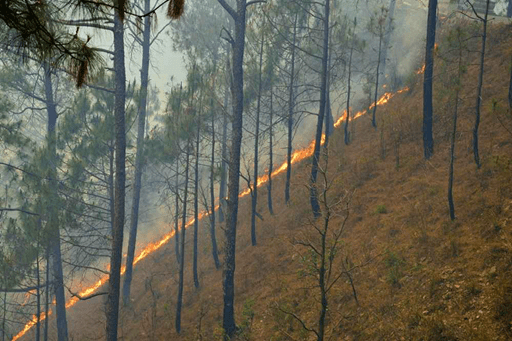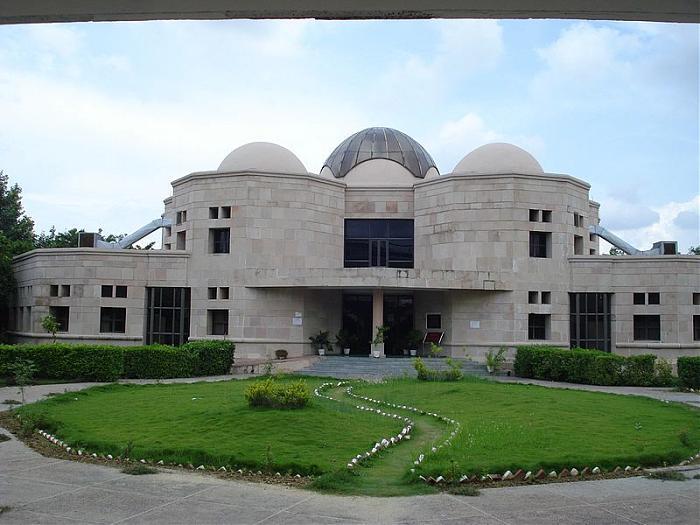Using machine learning to fight forest fires in Lower Himalayan Forests

GCRF@Essex interview questions
Principle Investigator:
Dr. Haider Raza: ‘This GCRF@Essex funded collaboration provided us with an opportunity to apply novel analytics methods to environmental sustainability issues.’
1) What is your international development research about?
We received GCRF@Essex research pump priming grants for two complementary projects.
a) Unravelling the Forest Fires in Lower Himalayan Forests: A Comprehensive Study of Indian Forest Regions in Uttarakhand using IoT technology
This project aimed to perform a comprehensive analysis of the underlying reasons for forest fires in the Pauri Garhwal district of Uttarakhand, India. The project was motivated by the severe environmental impacts of forest fires, which are a common occurrence in the region. Major factors contributing to the severe impact of fires are the difficult terrain and weather conditions in the area. The hills of Uttarakhand have a large number of villages in the middle Himalayan zone between 1000 and 2000m which are highly dependent on forests for their basic needs. Compared to standard forest fire technologies wireless sensor networks such as Internet of things (IoT) devices allow the monitoring of forest fires and the events leading up to fires in real time. We aimed to deploy a state-of-the-art internet connected multiple IoT devices in a key area of common fire incidents for 6 months during the winter season. The device would generate a rich dataset by monitoring key environmental variables such as CO2, O2, CO, NO2, temperature, humidity, methane, and ammonia levels. Analysis of this rich dataset would allow us to identify the key factors leading to the development of forest fires and to predict when a fire will occur and the areas at greatest risk of fires.
b) Machine Learning for In-network Performance Optimization of Wireless Sensor Networks and Internet of Things (IoT)
Wireless sensor networks (WSNs) and IoT-based environmental sensing devices are often deployed in regions with difficult terrains such as forest areas, where the parameters and networks statistics change continuously and frequently over time. The change in the network characteristics is imposed not only due to the external factors (e.g. node loss due to sudden animal movement, link loss due to harsh weather, inaccurate event detection due to multiple sound sources) but also because of the in-network parameters such as power failure, hop-to-hoc acknowledgement, stability period, and communication range. In such a scenario, processing multimodal data becomes a demanding task and is a prime concern for researchers working in difficult terrains. In this project we aimed to develop methodologies to aid the efficiency of WSN and IoT networks for data collection in difficult terrains.
2) What activities did your GCRF@Essex funding support?
GCRF@Essex funding supported online meetings with our research colleagues in India at the Indian Institute of Information Technology, Lucknow (IIIT-L), which helped us to define the objectives of our research collaboration.
For project A) a female researcher with expertise in machine learning was hired at IIIT-L with the view to analyse the forest fire dataset collected by the IoT device in the Uttarakhand forest region. Unfortunately, due to the COVID-19 outbreak, we were not able to deploy the IoT kit in the Pauri Garhwal forest region. However, our researcher analysed publicly available forest fire datasets acquired from the UC Irvine Machine Learning Repository (UCI) repository. These datasets allowed us to identify common features characterising the source and spread of forest fires in mountainous regions by applying machine learning methodologies. This work will feed into identifying areas in Uttarakhand at higher risk of fire damage.
For project B) we employed a female postdoctoral research assistant at IIIT-L for 5 months who developed methodologies to improve the efficiency of WSN and IoT devices.
In addition, we delivered a remote 5-day workshop: "Online International Workshop on Machine Learning Applications to Images, IoT and Wireless Sensor Networks" organised by IIIT-L. The workshop sessions were focused on IoT analysis, machine learning methods, computer vision, wireless sensor networks, and handling data distribution shifts. Workshop presenters were leading AI and machine learning experts from academia and industry from India and the UK. The workshop received more than 1200 applications of interest from Indian academics and industry professionals. We shortlisted 120 participants with focus on gender balance. All the tutorials were recorded and published on YouTube.
3) You are applying IoT technology to study Forest Fires in the Lower Himalayan Forests in India. How is your project benefitting this region and which Sustainable Development Goals (SDGs) are being addressed?
India falls in the “Lower Middle-Income Countries” category of the “DAC List of ODA Recipients Effective for reporting on aid in 2020”. Uttarakhand is a forest and biodiversity rich-Himalayan state with 45.32% of its geographical area under forest cover. It is the only north Indian state to have more than 33% of the area under forest cover. Fire is one of the major causes of forest degradation in India and has wide-ranging adverse ecological, economic and social impacts. The year 2016 (April- early June), witnessed a major Forest fire in the Chir Pine forests of Uttarakhand registering a total of 2069 Forest fire incidents affecting 4423 ha forests.
Our outlined challenges and proposed solutions are addressing Sustainable Development Goals (SDG) 13, 15 and 17. Our proposed project will identify the key regions at risk of fires in Uttarakhand and will identify important factors leading to the development of fires. This knowledge will enable local authorities to take preventive measures reducing the risk fires pose.
Our project has developed a well-structured dataset as well as a robust data analysis tool. Both will be published in open source data repositories. Our research collaboration and the online workshop helped to develop the research capacity in machine learning and complex data analysis at our partner institutions. We were also able to develop additional research project proposals. Our initial results will pave the way for larger studies, which may include using a drone to capture images and using computer vision to build a robust system, which can provide us with stronger evidence-based early-detection and prevention systems for forest fires.

4) You are closely collaborating with colleagues at the Indian Institute of Information Technology (IIIT), Lucknow. How did you find your collaborators?
Initially, we collaborated with Dr Vishal Krishna Singh from IIIT-L in the context of submitting a joint workshop proposal. Later using GCRF@Essex funds, we developed our relationship with various experts in machine learning and IoT at IIIT-L such as Dr Niharika Anand (expert in Wireless Sensor Networks, 4G and 5G technologies, and IoT) and Dr Soumendu Chakraborty (expert in Image Processing, Computer Vision, and Medical Image Analysis). We have also developed our relationship with Dr Akhilanand Chaurasia consultant at King George Medical University, Lucknow (expert in oral medicine, oral biology and community health). We are all now preparing several joint research proposals focused on the management of the COVID-19 outbreak and to tackle general healthcare challenges.
5) Are there any challenges when pursuing this international and collaborative project?
Due to the COVID-19 outbreak we had to postpone visiting forest sites and academic exchange visits but were able to collaborate remotely. We are hopeful to extend this collaboration in the coming years by submitting joint research proposals, implementing student exchange and performing further collaborative research.
6) What tips would you give to other people applying for Global Challenge Research Funding?
We would recommend investing quality time in framing research questions and a special focus on risk mitigation due to the current global health scenario. Conducting remote networking sessions such as workshops and webinars, are a good alternative option to develop relationship with stakeholders and to later generating impact.
7) How do your GCRF@Essex funded projects support your wider research plans?
Our first GCRF@Essex project laid the foundation for research uncovering the regions at high risk of forest fires in Uttarakhand. The work of the research assistant optimising data analysis of Wireless Sensor Networks and IoT device outputs have allowed us to explore a detailed view of the reasons for the failure of existing technologies. We also used our network optimisation techniques to deploy sensors in a cost-energy efficient manner. We developed an event intensity mathematical model to specifically discriminate multiple acoustic events in a forest region. We aim to develop an event detection algorithm which can accurately report multiple acoustic events and to develop a data classification algorithm for accurate inference and decision making.
In the longer term, we plan to develop an efficient data collection method which will be helpful in energy-efficient and timely reporting of events in time-sensitive incidents such as forest fires. Our expertise in data analytics and machine learning has so far mainly focused on healthcare. This GCRF@Essex funded collaboration provided us with an opportunity to apply novel analytics methods to environmental sustainability issues. AI and IoT sensing have the potential to protect large forest areas through longitudinal monitoring and we plan to combine this with AI-enabled drones to protect the forest from fires. In the long term it is feasible to combine IoT sensing and drone-based captured images to predict forest fires, map species distribution, extend of forest coverage and poaching routes.
Establishing our research relationship with colleagues at the Indian Institute of Information Technology (IIIT-L) with the aid of the GCRF@Essex funds allowed us to develop and submit a joint research proposal to the UKRI GCRF/Newton Fund Agile Response scheme funding call. This project will improve AI-based computer vision methodologies to aid COVID-19 face-mask detection on human faces.
Header image: A fire has broken out in the Pauri Garhwal district of Uttarakhand on May 23rd 2020 after COVID-19 pandemic. Source: https://www.tripoto.com/india/trips/uttarakhand-is-burning-is-anyone-listening-5b0bafab1b239


